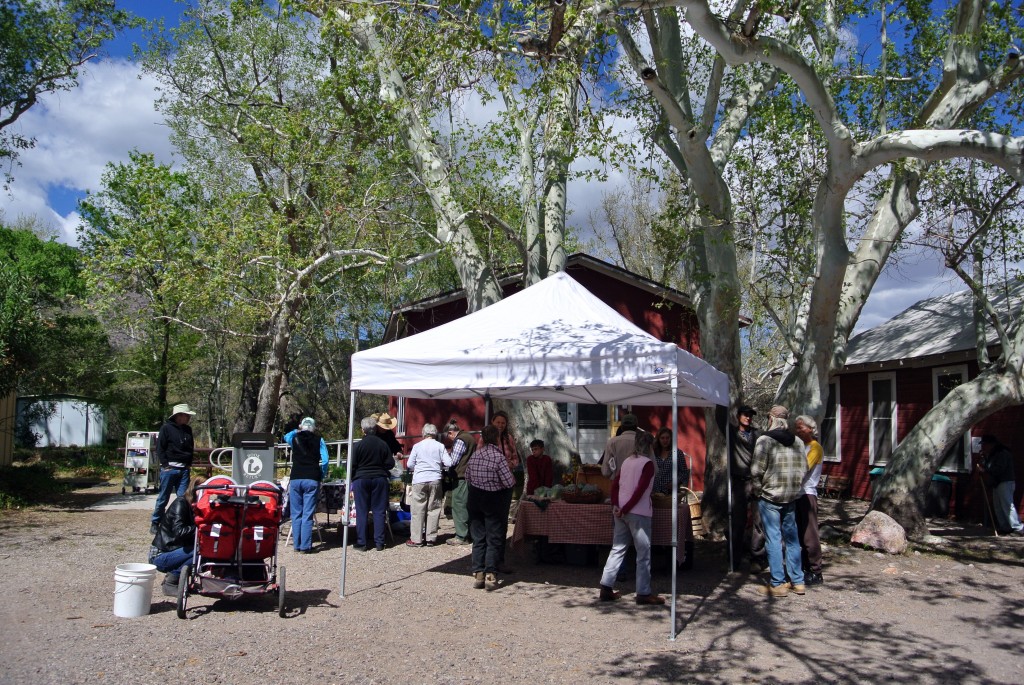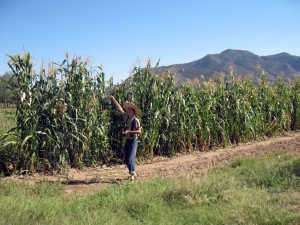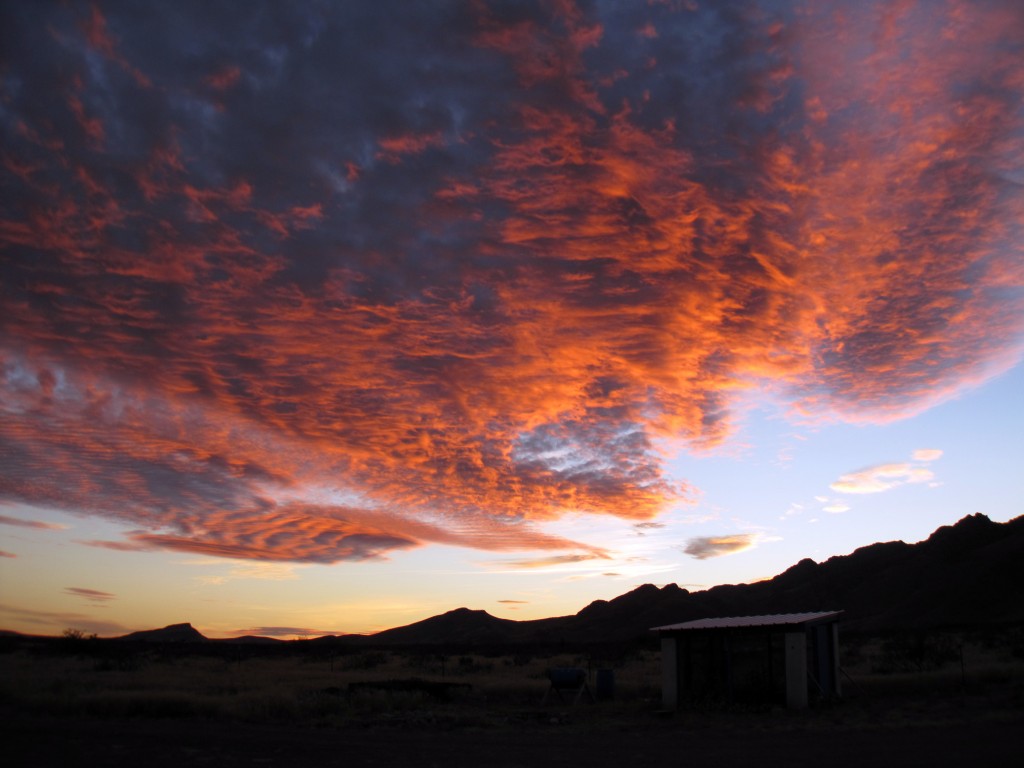We’ve looked at how food choices affect our own well-being, so let’s look now at how food choices affect our community.
First and foremost, our collective food choices have an impact on small family farms. In the 100 years or so, there has been a huge move from small family farms to large agribusiness. In 1900, almost 40% of the nation’s population lived on farms. Now, less than 2% does. In the same period, the number of farms has shrunk from 5.7 million to 1.9 million. The average farm size has gone from 146 acres to close to 500 acres. Most notably, large farms produce about 75% of total agricultural output.
Intensive farming or factory farming became popular after World War II with the advent of new chemical fertilizers, pesticides, antibiotics, and lots of government subsidies to encourage high productivity mono-cropping. Some of the advantages of factory farming are higher efficiency and lower food costs. Some of the disadvantages are environmental degradation, public health concerns, a decrease in biodiversity, and animal cruelty.
Some may think that bemoaning the demise of small farms is a hearkening back to days of old and that the modernization of farming is for the nation’s overall benefit. The more I learn about factory farming practices, the more I disagree.
Beyond the big picture outlook, I now have a much keen sense of how an individual purchase decision affects an individual farmer. Like any small business, but more even than most, a farmer who is deriving most of their income from farmer’s markets or CSA purchases depends on individuals in the community. For us, deciding to buy carrots at Safeway vs. the local farm stand seems like a minor trade-off between cost, quality, and convenience. For the farmer, those minor decisions add up to whether they’ll be able to farm again next year.
Having a small farm is a very tough way to make a living. I think I’m a hard worker and a great marketer, and frankly I don’t think I could do it.
In addition to farming, food processing has become very centralized. I recently heard that a post-9/11 threat assessment by the government ranked food processing as one of the greatest areas of vulnerability. (After deciding they couldn’t really do much about it, they apparently stopped talking about it.)
Buying food from small local vendors also helps support the local economy. Most of us probably feel better putting money into the pockets of a small farm family rather than a multinational corporation if we have a choice. And the dollars you spend locally are more likely to stay in the community and make life better for everyone. Again, I have more of a sense of this living where I live now.
Lastly, there are the issues of sustainability and self-sufficiency. I am not personally one who thinks “the end is near,” but the world is an uncertain place. Living out here in the middle of nowhere, I am more aware of how dependent we are on the global distribution chain. The thought of a break in the chain is disconcerting. For a whole variety of reasons, I find it comforting that, at our house, we make our own electricity and have our own small garden. Being somewhat self-sufficient is always empowering. From a community standpoint, I like the idea that we are not totally dependent on outside forces for survival as well. On the short list of things that people really can’t live without, food is up there.
Most importantly, if the local farmers we come to love decide that they can’t farm next year, it’s a loss to all of us. And one that is unlikely to be undone.
For those interested, more reading and local sources in your community are available here.




 In 1990, the USDA created a legal “USDA organic” certification. The main requirements of this are that crops are grown without synthetic fertilizers, and most pesticides are also banned. Animals must eat organic grains and cannot be given growth hormones or antibiotics. Genetic modification is banned. Anything labeled “USDA organic” must meet these standards.
In 1990, the USDA created a legal “USDA organic” certification. The main requirements of this are that crops are grown without synthetic fertilizers, and most pesticides are also banned. Animals must eat organic grains and cannot be given growth hormones or antibiotics. Genetic modification is banned. Anything labeled “USDA organic” must meet these standards.